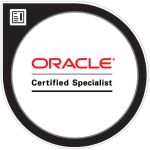oAppsNet Group has implemented multiple Oracle Financial Cloud Implementations. These implementations are based around the following Cloud modules:
- Common Financials
- General Ledger
- Financial Reporting Center
- Intercompany
- Payables – Invoicing and Payments
- Receivables – Customer Billing
- Receivables -Customer Payments
- Fixed Assets
- Cash Management
- Expenses
- Collections
- Purchasing
- Order Management
- Implementation Roles
- Implementation (Full or Module)
- Business Process Analysis and Redesign
- Functional Expertise
- Regression Testing for Quarterly Releases.
- Functional Data Conversions (FDBI)
- Post Production Support
- Application Training
Some key features of Oracle Financials Cloud
Spreadsheet Integration
Excel spreadsheet templates can be used in multiple modules to create transactions. Some examples:
- Suppliers
- Customers
- Journal Entries
- Cross-Reference Rules
- AP Invoices
- AR invoices
Spreadsheet Implementation
Excel spreadsheet templates can be used to implement data through Rapid Implementation Templates. For example, the financial enterprise and reporting structures can be loaded on the same workbook and would include:
- Companies (Legal Entities)
- Ledgers by country
- Business Units
- Chart of Accounts
- COA segment values
- Segment value hierarchies (Multiple hierarchies can be loaded after the original)
- Financial sequences
- Required subledger accounts.
Other Modules with Rapid Implementation Templates
- Cash Management
- Tax Configuration
- Customers and Budgets
Infolets and Infotiles
These are mini interactive dashboards that the end user can view for reporting purposes and also see what specific tasks need attention. For example, the Payables Manager can view their dashboard and see what invoices are needing to be approved or how many discounts have been missed because of late payments and research the issues.
OTBI – Oracle Transactional Business Intelligence
These reports are standard in the implementation and can be created manually to see data across subledgers in order to aid in daily, monthly and yearly business needs.
Payables Invoice Approvals
There are two major avenues to approving Payables Invoices.
1. Invoices matched to a Purchase Order/Requisition
Account Payable invoices that are associated with purchase orders (PO) should not require reapproval when they are received because they have already been pre approved via the PO approval process. However, some companies still want a second approval process if the invoice exceeds a certain dollar threshold but this is an exception and not the norm.
2. Invoices not matched to Purchase Orders/Requisitions
Invoices that are not associated to any pre-approval process (i.e. Purchase Orders) should follow an approval hierarchy before being paid. The Oracle Fusion platform has the functionality to configure an approval process and it’s enforced by an approval workflow associated to some type of approval hierarchy. The oAppsNET Group has implemented the various approval hierarchies offered in Oracle Fusion:
Employee – Supervisor: When an invoice is sent for approval, it will go to the supervisor assigned to the employee. That supervisor is assigned a job and that job has an approval limit. If the supervisor has the authority (i.e. dollar limit) then the workflow is completed and the invoice is ready for payment, otherwise, the invoice is routed up the organization until the proper authorization level is reached.
Group Approval: When the invoice is sent for approval, the invoice would move up the hierarchy until it reaches a group with the proper approval authority (i.e. dollar limit). Once a single user in that group approves the invoice then that person approves the invoice on behalf of the entire group.
Detail Approval: When an invoice is sent for approval, the invoice would be routed to a user or group based on a non traditional approval hierarchy. The invoice typically takes a more complex approval path based on an organization’s specific criteria. This is highly configurable and can achieve the organization’s objectives but, in the long run, maintaining this type of approval hierarchy could outweigh most of the initial benefits.
When building a hierarchy other than an employee-supervisor relationship , always try to keep the process as simple as possible for long term support purposes.
Reference: How to Turn on Workflow Approval for Fusion Payables Invoices (Doc ID 2227328.1)






